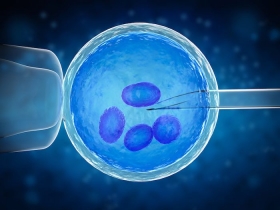What are the stages of IVF?
WHAT IS IVF AND WHO NEEDS IT?
IVF (short for in vitro fertilization) is one of several techniques available to people with fertility problems. In general, infertility is defined as not being able to conceive after 12 months of having regular unprotected sex. Infertility can affect both men and women of all ages, although it typically occurs in people that are over the age of 35, as fertility steadily declines as we age. [1] Treatment such as IVF can help individuals with fertility problems conceive successfully.

WHAT ARE THE STAGES OF IVF AND HOW DOES IT WORK?
Though IVF treatment can vary depending on where you get it done, it can generally be broken down into several steps – ovarian stimulation, egg retrieval, sperm retrieval, fertilization, and embryo transfer.
Simply put, IVF is a method of assisted reproduction in which a man’s sperm and a woman’s eggs are combined outside of the body in a laboratory. After successful fertilization, the egg (known as an embryo) is then transferred to the woman’s uterus where it can then develop. [2]
Now let’s go more in-depth and break down the procedure into several individual steps:
Step 1: Ovarian stimulation
An IVF cycle will begin with the use of synthetic hormones that stimulate the ovaries to produce more eggs. This is necessary as the body typically only produces one egg each month. Multiple eggs are needed as some eggs won’t develop properly after fertilization.
Several different types of medication may be used to achieve this. The one that you will need depends on your individual needs and will be determined by your doctor. [3]
Step 2: Egg retrieval
The second step in this procedure is to collect the eggs from the ovaries. This will be done using minor surgery in which you are sedated, and the eggs are retrieved trans-vaginally. [4]
Step 3: Sperm retrieval
On the same day that the eggs are retrieved, the sperm from your partner or donor is also collected. The semen sample is typically collected through masturbation. Afterward, the sperm are then separated from the semen fluid through a high-speed spin cycle to find the healthiest ones. [5]
Step 4: Fertilization
The next step of the process is to fertilize the egg. This is typically done in one of two ways:
- Conventional insemination, in which healthy sperm and mature eggs are mixed and incubated overnight.
- Intracytoplasmic sperm injection (ICSI), where a single healthy sperm is injected directly into a mature egg. [3]
Step 5: Embryo transfer
The final stage of this process is to transfer the now fertilized embryo. This is typically done in a doctor’s office and usually takes place two to five days after egg retrieval.
Before the transfer, you may be given a mild sedative. Next, the doctor will then insert a long, thin, flexible tube known as a catheter into your vagina, through your cervix, and into your uterus.
The doctor will then place the embryo or embryos into your uterus using a syringe. If successful, it will then implant in the lining of your uterus about six to ten days after egg retrieval. [3]
If you’re looking to get IVF treatment, click here to get in touch with our professional team who will be happy to help you.
SOURCES:
[2] In vitro fertilization (IVF): What are the risks? (reproductivefacts.org)
[3] In vitro fertilization (IVF) - Mayo Clinic
[4] The In Vitro Fertilization (IVF) 5 Step Process | Piedmont Healthcare
[5] Understanding the Steps of IVF | City Fertility






